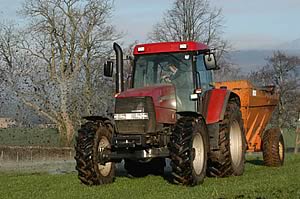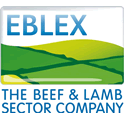| 2009-04-14
Grazing livestock producers across the country should concentrate on making the very most of the valuable asset they have in their farmyard manure (FYM) this season, recommends EBLEX, the industry body for beef and lamb levy-payers in England.
A particularly valuable fertiliser resource at current prices, FYM carries far less onerous usage restrictions than either slurry or artificial fertiliser under the new NVZ regulations. However, it needs to be utilised with care to secure the greatest farm value within the rules.
Every tonne of cattle manure contains approximately 0.6 kg of available nitrogen, 3.5 kg of phosphate and 8.0 kg of potash. At current fertiliser prices, this makes it worth more than £11/tonne or over £70/head/year at a typical suckler cow’s annual output.
Because manure contains relatively high levels of phosphate and potash, regular applications to the same field can soon over-supply these nutrients. Regular soil analysis is, therefore, recommended so applications can be targeted to individual needs, with priority given to fields with P and K indices of 2 or less.
Careful control of applications to pastureland for either silage production or grazing is further essential to avoid negatively affecting silage quality or grazing intakes. In particular, pastures should be left ungrazed for at least a month – and preferably eight weeks – after manure spreading and certainly until visible signs of solids have disappeared.
This and the fact that up to 95% of FYM’s nitrogen content can be lost following surface spreading means applications should be made immediately prior to or during active sward growth in the spring wherever possible. It also means rapid incorporation is important to minimise losses following spreading onto bare ground ahead of forage maize or other crops. Smart use of FYM will further lower the environmental footprint of production by reducing nitrogen losses to the atmosphere and increasing soil carbon.
Unlike artificial nitrogen fertilisers or slurry, there are no closed periods for spreading low nitrogen, straw-based FYM on land as long as field conditions are suitable (i.e. not waterlogged, flooded, snow-covered or frozen for more than 12 hours in the past 24). The new NVZ rules also allow FYM to be stacked and stored in suitable field locations for up to 12 months providing these are away from land drains or water courses.
The organic manure field limit is 250kg N/ha/year which equates to 42 tonnes/ha of FYM (17 tonnes/acre). This is a maximum application rate for any one field and can not be applied in every field as the overall average farm limit is lower at 170 kg N/Ha. It is also important to consider the ‘N max’ limit of the crop being grown as this specifies maximum average N applications from manufactured and livestock manures for a particular crop type.
While the NVZ farm limit for manure N is 170 kg/ha of total N produced by livestock in each calendar year averaged over the total area of the holding, livestock units with at least 80% of their area as grassland will have the opportunity to apply to the Environment Agency for a derogation allowing up to 250kg N/ha to be applied per year.
 Surge in Demand for Calcified Seaweed Fertiliser Surge in Demand for Calcified Seaweed Fertiliser
 Syngenta Initiative Responds to Grain and Fertiliser Price Pressures Syngenta Initiative Responds to Grain and Fertiliser Price Pressures
 Don't Gamble with Yields and Quality - Masstock Don't Gamble with Yields and Quality - Masstock
|



